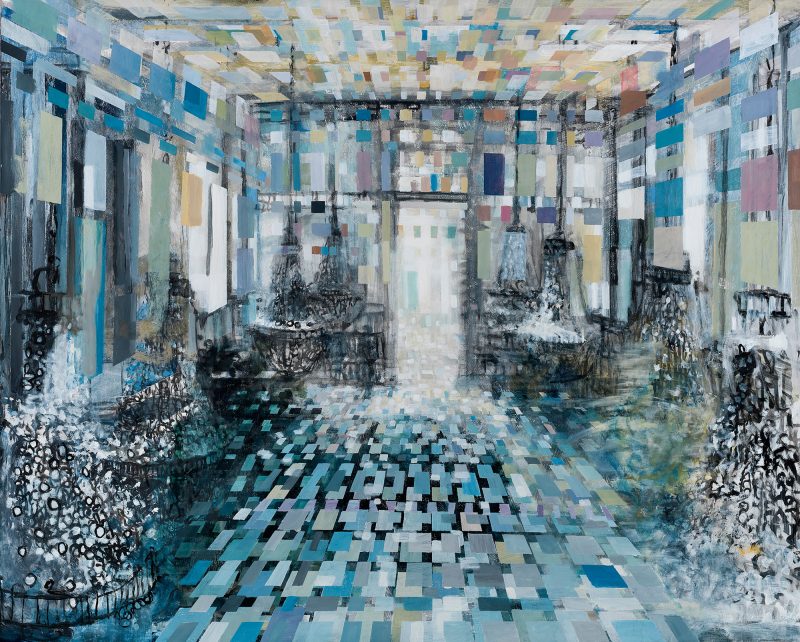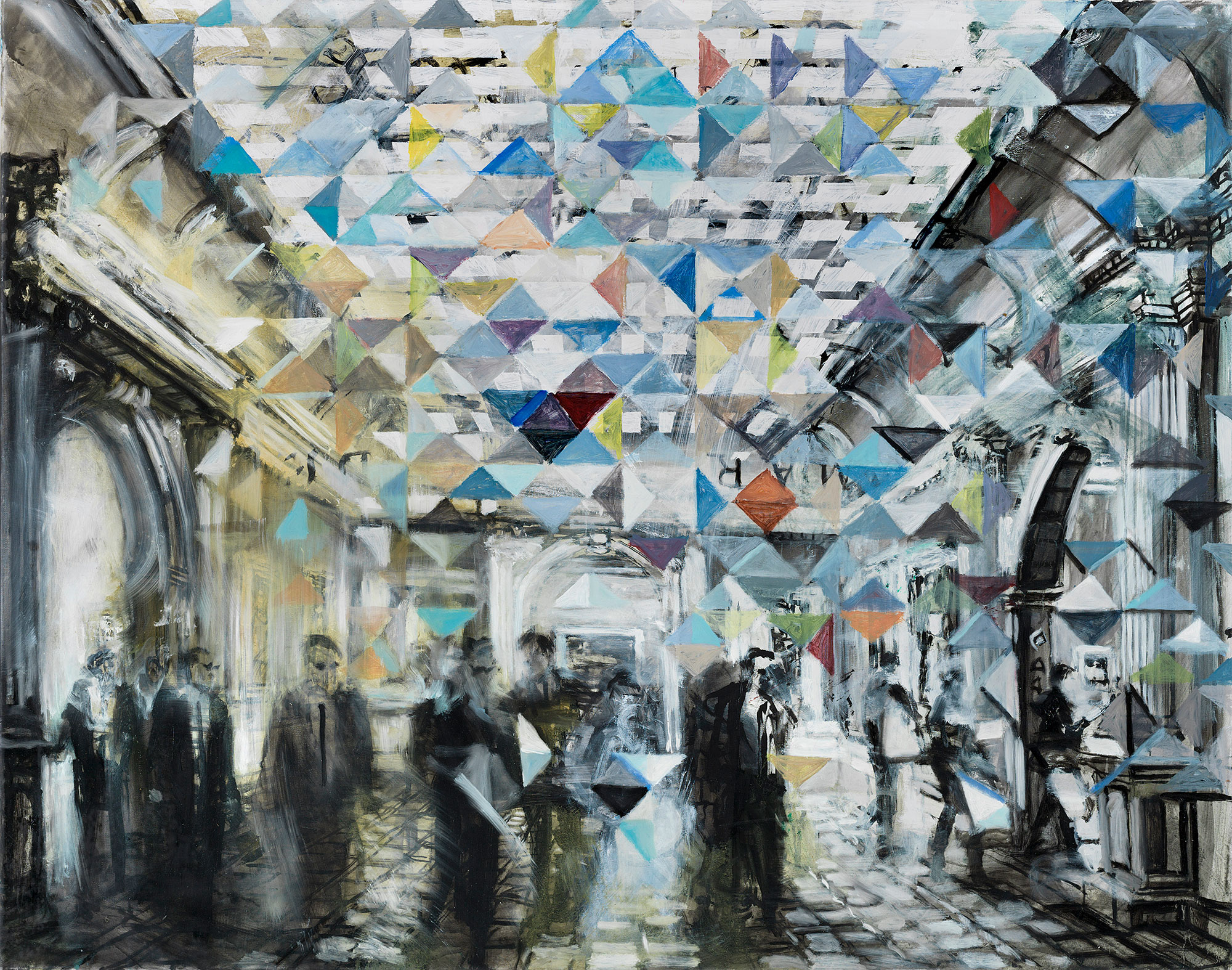Writing in her webzine, “It’s All About Art,” Danish art critic Trine Ross has posted an eloquent and highly informative essay on the paintings of Anders Moseholm, whose works are featured in the current exhibition at ArtSpace/ Virginia Miller Galleries, “Eccentric Visions Part II.”
“Whether they are city-spaces or spaces within the buildings that make up the city, all of Moseholm’s spaces carries stories within them,”
she states, after explaining that the artist’s paintings cover the concept of time as a continuum, rather than the singular moment:
“Remnants of the past or the future manifest themselves, like a momentary glimpse of a future adult, awaiting behind the features of a child, or a brief recognition of the child you used to know, now hidden in the guise of adulthood. Thus, what has been and what is yet to transpire, or what may possibly transpire, is present within the same second. This undeniably opens up spaces and possibilities in the painting itself, as well as within the mental state of the viewer induced by the painting.”

According to Ross, some of Moseholm’s urban exteriors, “city-spaces,” are like Charles Dickens’ “Christmas Carol,” depicting something that has been as well as the city of the future.
“Cities,” she points out, “are made up of architecture from different epochs, and similarly traces of the city of the past may be found either as ruins appearing from below during the process of constructing the city of the future, or less markedly so, in the shape of tiny remnants from the past.”
Moseholm’s interiors are equally timeless, the critic continues, sometimes “as though in a dream,” with ceilings that “open into the sky, or whatever may be outside,” and some other surfaces that seem to float “in a multitude of levels.”
The artist’s extraordinary viewpoint “unfolds the world anew,” Ross concludes:
“That is why you can continue to look at Moseholm’s artwork for hours and hours, without ever getting to the bottom of the painting, and utterly without wanting to do so.”

